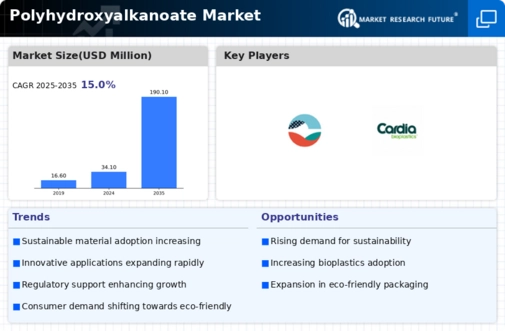Market Trends
Key Emerging Trends in the Polyhydroxyalkanoate Market
The market trends of polyhydroxyalkanoate (PHA) have been experiencing significant growth in recent years. PHA is a biodegradable polymer derived from renewable resources such as plants and bacteria, making it an attractive alternative to traditional petroleum-based plastics. One of the key drivers of the market growth is the increasing consumer demand for eco-friendly and sustainable products. As awareness of environmental issues continues to rise, consumers are seeking out products that have minimal impact on the planet, leading to a surge in demand for PHA-based materials.
Another factor driving market growth is the implementation of strict regulations and policies aimed at reducing plastic pollution. Governments around the world are introducing bans and restrictions on single-use plastics, prompting industries to seek out sustainable alternatives like PHA. Additionally, companies are increasingly adopting corporate sustainability initiatives, which include the use of biodegradable materials in their products. This growing demand from both consumers and businesses is fueling the expansion of the PHA market.
In terms of applications, PHA is being utilized across various industries such as packaging, agriculture, consumer goods, and biomedical. Packaging remains the largest application segment for PHA, driven by the need for eco-friendly packaging solutions. PHA's biodegradability and versatility make it suitable for a wide range of packaging applications, including food packaging, compostable bags, and disposable utensils. Its eco-friendly and nontoxic nature, as well as better physical features.
The agriculture sector is also a significant contributor to the demand for PHA, particularly in the form of biodegradable mulch films and agricultural coatings. These products help reduce plastic waste in agricultural environments while offering benefits such as moisture retention and weed suppression. Additionally, PHA-based materials are being increasingly used in consumer goods such as disposable cutlery, cups, and plates, as well as in textiles and personal care products.
In the biomedical field, PHA is gaining traction as a biomaterial for various applications such as tissue engineering, drug delivery systems, and medical implants. Its biocompatibility, biodegradability, and tunable properties make it an attractive option for medical devices and implants, offering potential benefits such as reduced risk of inflammation and infection.
One of the challenges facing the PHA market is the cost of production. While PHA offers significant environmental benefits, it can be more expensive to produce compared to traditional plastics. However, ongoing research and development efforts are focused on reducing production costs through process optimization, the use of alternative feedstocks, and scale-up of production facilities. As technology advances and economies of scale are achieved, the cost competitiveness of PHA is expected to improve, further driving market growth.
Another challenge is the limited availability of commercial-scale PHA production facilities. While there has been significant investment in PHA production capacity in recent years, the industry still lags behind traditional plastics in terms of scale and infrastructure. However, this presents an opportunity for investment and expansion in the PHA market, as companies seek to meet the growing demand for sustainable materials.





Leave a Comment